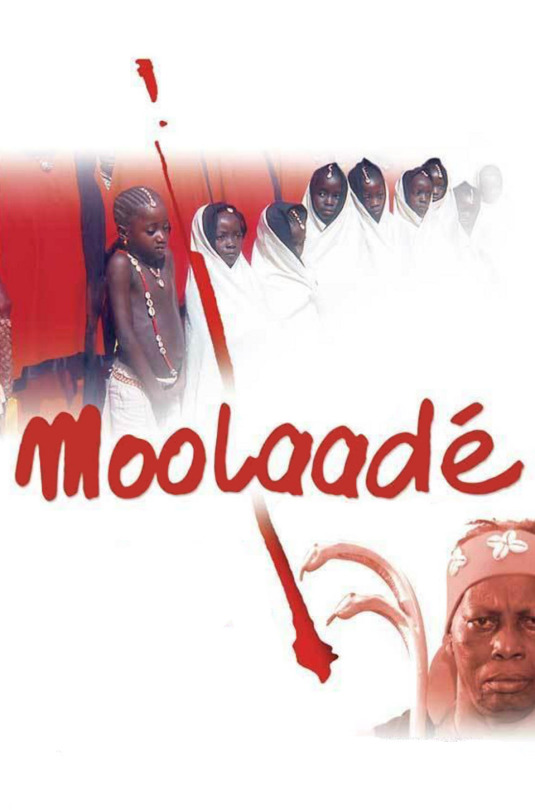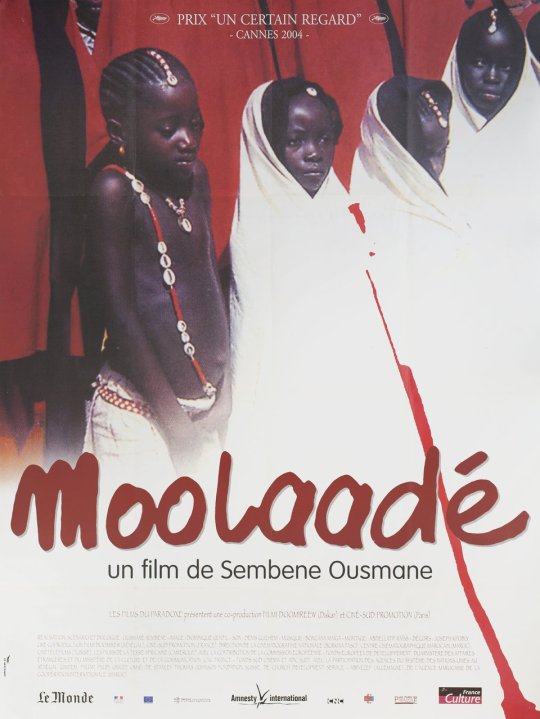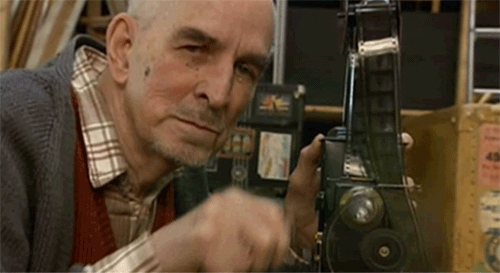#mooladé
Explore tagged Tumblr posts
Text

#polls#movies#mooladé#mooladé 2004#mooladé movie#moolade#2000s movies#ousmane sembène#fatoumata coulibaly#maimouna hélène diarra#salimata traoré#dominique zeïda#rasmané ouédraogo#requested#have you seen this movie poll
22 notes
·
View notes
Text

Mooladé | Dir. Sembene Ousmane | Senegal, Francia, Burkina Faso, Cameroon. Marruecos, Tunez | 2004
0 notes
Text
'Mooladé' movie review
This movie kept my attention from beginning to end. The start of the movie introduces 4 young girls who ran away from the coming of age ritual because they didn’t want to be “purified”. To give more context as to why, the purification in question is genital mutilation, removal of the clitoris specifically. This was the first time I ever heard of female genital mutilation being enforced as a cultural tradition. I’ve heard of circumcision but not this. I have a lot to say and unpack about the idea of this ceremony and the reasons behind its existence as a whole. The thought process behind removing the clitoris, which gives a woman sexual pleasure, has very demeaning implications. It’s almost as if they’re saying women should not be having sex for any reason outside of reproductive purposes. Because god forbid a woman actually enjoy herself during sexual intercourse. It reduces woman to being baby makers and nothing else. There’s also the underlying implication that if a woman takes pleasure during sexual intimacy, she is not “pure” in comparison to women who can’t enjoy it as much due to the mutilation. The boys of the village seemingly don’t have to go through any similar ceremony, yet the young girls are forced to. Overall, I feel like this practice is just another way to oppress and control women’s bodies.
The 4 young girls in the movie were scared of going through the ceremony, especially considering some girls have died from it already. For this reason, they ran away and went to Collé—who has some level of authority despite being a woman—for help. In order to protect them from being taken away by the female elders to carry out the ceremony, Collé protects the girl with a Mooladé. A Mooladé is a spiritual protection and it keeps the elders from going in her house. This creates a conflict between Collé, the female elders, her husband, and other men in the village. As the film goes on, the massive social hierarchy between men and women becomes more and more apparent. Collé is just one of the multiple wives her husband has, though she is his favorite. It begs the question, why is it acceptable in the village for men to have multiple wives yet the women can’t have multiple husbands? It’s more of a rhetorical question, since the answer is fairly clear. Men have more freedom and autonomy over their lives in the village, which is why when Collé rebels there’s a big fuss about it. Being motivated by Collé, the other women of the village begin to question why their young girls have to be forced into “purification”, and they start to push back against the tradition as well. This starts a movement within the village, one side trying to force Collé and the other women to conform and the other refusing to back down.
There’s even a scene with Collé getting whipped by her husband because he wants her to remove the mooladé, but she stays silent despite the pain she’s in. I thought it was a very powerful scene because it was clear her husband didn’t want to hurt her even though he was displeased with what she was doing. The acting in that scene especially was amazing. In the end, Collé and the women of the village get their wish and the purification ritual is no longer forced onto the young girls of the village. Overall I enjoyed this movie and liked how it shows that sometimes it only takes one event or one person to go against the grain for more people to join alongside them and make a change.
0 notes
Text
Mooladé (en réel 35mm projection, top tier qualité)
20 notes
·
View notes
Text
FESTIVAL INTERNACIONAL DE CINE INDEPENDIENTE/ SEPTIMA EDICION
Un mapa del cine del mundo

Clarín.com 12/04/2005 - 0:00
Africa y Oriente Medio
Una de las mejores películas de Cannes, Mooladé, del octogenario senegalés Ousmane Sembene, es una de las cumbres del cine de ese continente. El iraní Abbas Kiarostami se pone radical con los planos fijos de Five, el israelí Amos Gitai trae el drama Promised Land, y el palestino Hany Abu-Assad, la literalmente explosiva Paradise Now.
Lejano Oriente
Por el lado del cine de acción asiático, el BAFICI ofrece un policial de Johnnie To (Breaking News) y el premiado thriller del coreano Park Chan-wook (el sorprendente Oldboy). Pero el fuerte son autores como el chino Jia Zhangke (The World) el coreano Kim Ki-duk (3-Iron y Samaria), el tailandés Apichatpong Weerasethakul (la asombrosa Tropical Malady), el taiwanés Tsai Ming-liang (The Wayward Cloud, sobre el mundo del porno) y el japonés Hirokazu Kore-eda (la angustiante Nobody Knows). Habrá sorpresas de Malasia (The Beautiful Washing Machine), Tailandia (Beautiful Boxer), Filipinas (Women of Breakwater) y Corea (So Cute), y animación de Hong Kong, con la brillante McDull, prince de la bum.
América latina
Tras su paso por Mar del Plata, llega Machuca, la exitosa película del chileno Andrés Wood. También se verá Contra todos, del brasileño Roberto Moreira, sobre una familia de clase media de San Pablo. Habrá un documental de Eduardo Coutinho (Peoes) centrado en los sindicalistas que combatieron con Lula en los '70; la coproducción chileno-argentina Mi mejor enemigo, de Alex Bowen, sobre el casi conflicto del Beagle, y el filme mexicano Relatos desde el encierro, sobre las prisioneras en la cárcel de Puente Grande. Justicia, de Ramos Agusta (Brasil); El escolaso, de Federico Beltramelli (Uruguay) y Toro negro de Pedro González Rubio (M��xico) completan.
Europa
Francia trae pesos pesados como Alain Resnais (Pas sur la buche), Agnes Varda (cinevardaphoto), Jean-Luc Godard (Notre musique), Chris Marker (Chats perchés), Raymond Depardon (Profiles Farmers: Daily Life), la dupla Straub-Huillet (Une visite au Louvre) y Olivier Assayas (Clean). Los alemanes Harun Farocki y Fred Kelemen traen sus respectivas Nothing Ventured y Fallen, en tanto que de España llegará Cachorro, de Miguel Albadalejo. Regresa el italiano Vincenzo Marra con Vento di terra y Goran Paskaljevic trae su dura Sueño de una noche de invierno. La irlandea Omagh (sobre un atentado del IRA), el drama sueco-danés Day and Night, de Simon Staho, y la película de acción subterránea Kontroll, de Hungría, completan el listado.
Estados Unidos
Algunos de los grandes nombres del cine independiente norteamericano vienen con trabajos que no están a la altura de sus clásicos, como The Girl From Monday, de Hal Hartley; Silver City, de John Sayles; Palindromes, de Todd Solondz, o A Dirty Shame, de John Waters. Mucho más interesante es Undertow, otra exploración por el sur de David Gordon Green o Mondovino, en la que Jonathan Nossiter se mete con el negocio vitivinícola. Kevin Bacon se luce en The Woodsman, de Nicole Kassel, y The Heart is Deceitful Above All Things es un tómelo o déjelo explosivo de Asia Argento. Imperdibles son los documentales Capturing the Friedmans, de Andrew Jarecki y Dig!, sobre la rivalidad entre dos bandas de rock estadounidense.
#el clarín#cinema#ousmane sembene#abbas kiarostami#amos gitai#hany abu-assad#john waters#john sayles#jean-luc godard#agnes varda#miguel albadalejo#goran paskaljevic#simon staho#eduardo coutinho#apichatpong weerasethakul#jonathan nossiter#todd solondz#olivier assayas#raymond depardon#chris marker#pedro gonzález rubio#kim ki-duk#asia argento
1 note
·
View note
Text
Mooladé Film Review
This film tackles so many different aspects of tradition based society through its focus on one particular tradition; Female Genital Mutilation (FGM). Although the film never explicitly depicts the act of mutilation it is simple to see that it is a horrific process that often leads to painful debilitation and sometimes even death, as the film shows us. Through its look into FGM Mooladé tackles the traditional, religious patriarchy that is prevalent in much of Africa and the Middle East, which is of course not shown in the film, but which comes from a strangely warped adherence to the teachings of Islam. Abrahamic religions, of which Islam is a part of, all rely on the patriarchal power structure and this is seen in fine detail throughout this film. However this film deals with what can happen when a small scale patriarchy gets too much power and begins making up rules that are not held by the greater religion. Because of the idea of absolute patriarchy it becomes very easy for the men of the village portrayed in the film to craft the lives of their wives in ways that directly benefit their power structure, even if it means horribly mutilating their daughters with some savage ritual. Mooladé does a fantastic job of showing how a tradition that is so obviously terrible can be accepted even by those that it harms if the surrounding culture reinforces it enough over time. As we can see in this film FGM has become a culturally desirable trait for women and because men hold the power in the patriarchy women must conform to the rules and regulations set down by them.
It is very interesting to see how the act of FGM is so readily accepted by many of the women in the village, and presumably in many parts of Africa as well, but especially through the group called Salindana, the women who perform the mutilation. These women have become so involved in the tradition that they accuse Colle of “wanting their children to be ‘unpure’” (Sinha167) according to Andresh Sinha in her piece Millennial Cinema. This shows how deep the tradition, and dare I say it brainwashing, goes. The women in the film advocate for their own mutilation because of tradition based on false religious teaching. It was truly amazing to see Collé and the rest of the women in the village rise up against the oppressive male leaders of the village and say “no more”.
0 notes
Text
Oro Nero
E’ partito il 25 esimo Festival del Cinema Panafricano di Ouagadougou, e io ho la fortuna di assistervi. Già l’altro ieri mi ero messa in testa di voler vedere dal vivo, per la prima volta, Alpha Blondy, il Bob Marley dell’Africa occidentale. Il sessantenne impegnato nella causa post rivoluzionaria e nella memoria di Thomas Sankara, è salito ieri sul palco dello Stadio Municipale, dove si è svolta la cerimonia di inaugurazione della kermesse cinematografica. Lo stadio era ghermito di persone, e non raramente incrociavo qualche viso pallido di turisti e giornalisti internazionali accorsi numerosi per testimoniare il grande evento.
Dopo i consueti convenevoli delle varie autorità che si davano il cambio sul plateau, ecco l’apertura di alcuni artisti, tra i quali i musicisti Dicko Fils, Sana Bob, Smokey e l’umorista Moussa Petit Sergent. Ma la star più attesa, Alpha, si è fatta attendere, non risparmiando le polemiche del pubblico che ha criticato un’organizzazione apparentemente troppo concentrata sull’artista ivoriano, trascurando gli artisti meno celebri.
Mi sono divertita: a differenza delle altre cerimonie pubbliche a cui ho partecipato in passato, questa volta lo show l’ha fatta da padrone: più spazio per gli artisti, ma forse poco accento sul cinema africano, che avrebbe meritato un’attenzione maggiore.
A metà concerto le guardie hanno aperto i cancelli, e insieme al pubblico in visibilio sono scesa in campo, a qualche metro dal palco. La televisione burkinabé è anche riuscita a strapparmi una mini intervista da “festivaliera”; avrò detto qualche castroneria. Bella l’atmosfera, bello vedere i ragazzi che alzavano le ginocchia al ritmo delle note reggae, e urlavano il nome di Sankara a richiesta di Alpha. Subito dopo mi sono diretta al cinema Neerwaya, dove il primo film proiettato è stato SEMBENE!, diretto dal senegalese Samba Gadjigo. Il documentario è una nostalgica testimonianza della ricchezza artistica lasciata dal cineasta senegalese Ousmane Sembene, definito dalla critica “Il padre del cinema africano”. Gadjigo, professore universitario negli Stati Uniti, apre il film con la frase “Se gli africani non si raccontano l’Africa sparirà”. La frase riflette il punto di vista, l’impegno e la dedizione di Sembene, nato nel 1923 da genitori pescatori, e diventato scrittore e regista dopo un periodo trascorso in Francia, che si è dimostrato rivelatore dell’importanza e dell’autenticità delle storie del popolo del continente nero. Gadjigo è cresciuto, personalmente e a livello professionale, con i film di Sembene, e nel corso del documentario ne racconta i continui scambi, i tour del mondo in veste di suo accompagnatore alle anteprime e ai festival europei che hanno visto Sembene protagonista assoluto ed ospite d’eccezione.
Il film è un feed back continuo dei personaggi intervistati, tra cui il figlio meticcio di Sembene, i protagonisti dei suoi lungometraggi, la domestica e amica inseparabile che lo ha curato fino alla sua scomparsa nel 2007.
Sembene ha raccontato l’Africa post colonizzazione, quella di cui gli europei non volevano sentir parlare, quella che ha subito le atrocità del lavoro forzato, della corruzione dei bianchi, delle rivolte di classe. Guardando il film ti viene voglia di metterti a cercare le sue opere, sederti per ore e vivere l’Africa sul grande schermo. E’ forse questa il più grande merito di Sembene: aver utilizzato la gente di villaggio, storie vere, correnti, crudeli e intime che i paesani senegalesi e maliani si portano dietro da decenni. E la sua è una denuncia sociale: in Mooladé contro le mutilazioni genitali femminili, in La Nera di contro i compromessi della schiavitù francese.
Il cinema di Sembene non ha filtri, non si cura delle censure (avvenute soprattutto in Francia in occasione del film Camp de Thiaroyé, una denuncia delle eventi a sfondo razzista avvenuti nel campo di smistamento della periferia di Dakar), ma anzi si prefigge di raccontare le striature del popolo africano di cui Sembene si è sentito fiero solo dopo aver conosciuto il popolo europeo. La poesia della consapevolezza di Sembene si rivela nelle sue immagini, nelle inquadrature dei piedi di una bambina che percorre le strade di paese con il fagottino in mano, nel volto segnato di una donna che si ribella all’autorità maritale, nello spirito guerriero degli schiavi lavoratori.
Questo è solo l’inizio di una settimana di cinema testimonianza, di qualità, di vitalità. #fespaco2017 #ouagadougou #burkina #cinema
0 notes